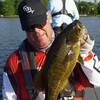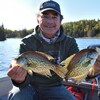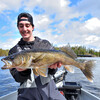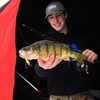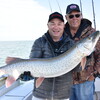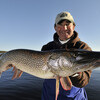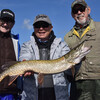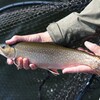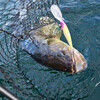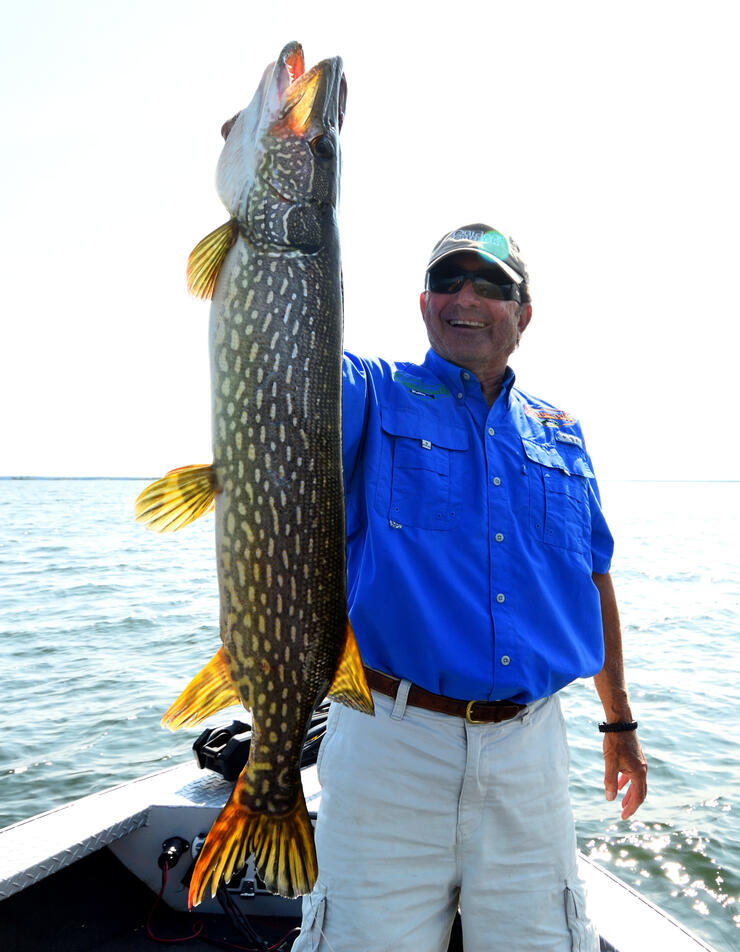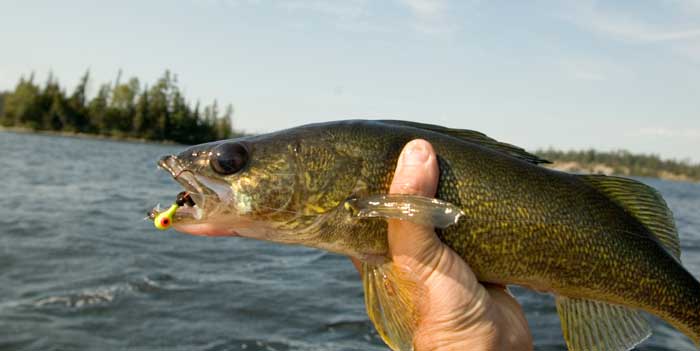Heat Wave? Cold Front? No Problem.
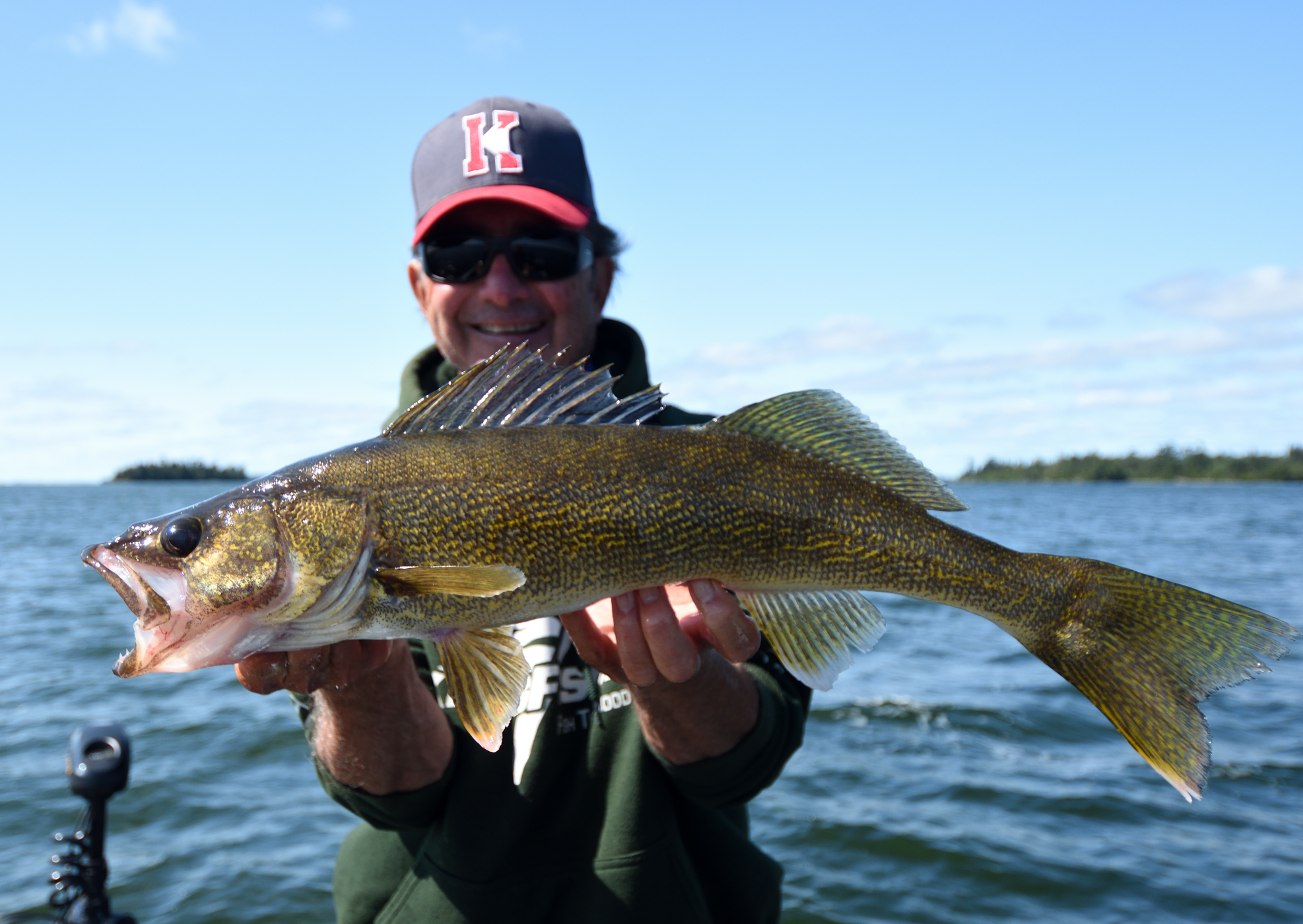
A widely held belief amongst anglers is that fishing is usually the most challenging the first couple of days after a cold front passes through an area. And cold front can be a misnomer because, in a sweltering hot summer like the one we are currently experiencing across Northern Ontario, it can actually be a welcome relief from the heat and humidity.

Early last week, for example, the temperature moderated significantly here in Northwestern Ontario, when a cold front pushed through Sunset Country, dropping the daytime "feels like" temperatures from the mid-90° F / mid-30° C mark to the much more pleasant mid-70° F / mid-20° C range.
What typically happens when a front like this moves through the area is that the walleyes, bass, muskies, and pike go on a feeding frenzy just prior to the arrival of the weather. In fact, they feed so ravenously that the next few days, when the puffy white clouds and bright blue sky arrive—classic hallmarks of a front's passage—the fish are much less hungry. Indeed, they are laid back, relaxed, and generally take life easy.
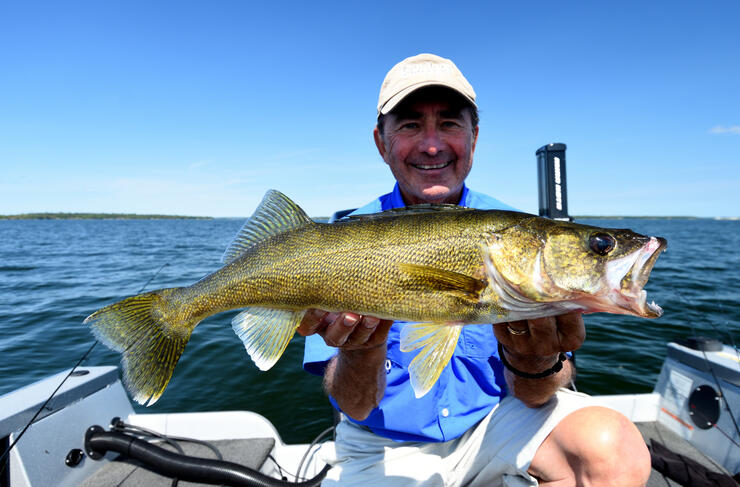
Anglers have long countered the effects of a cold front by scaling back their tackle, using light finesse tactics, and slowing down their presentations to a snail-like crawl. A classic example is walleye anglers draping light jigs tipped with small minnows over the side of the boat. It's like offering a well-fed diner a chocolate-covered mint as he or she walks out of the restaurant at the end of a satisfying meal. Who can refuse it, right?
But there is another, much more enjoyable way to trash the cold front blues. And that is to take a contrarian position. Or as I like to say: go big, go fast, but don't go home.
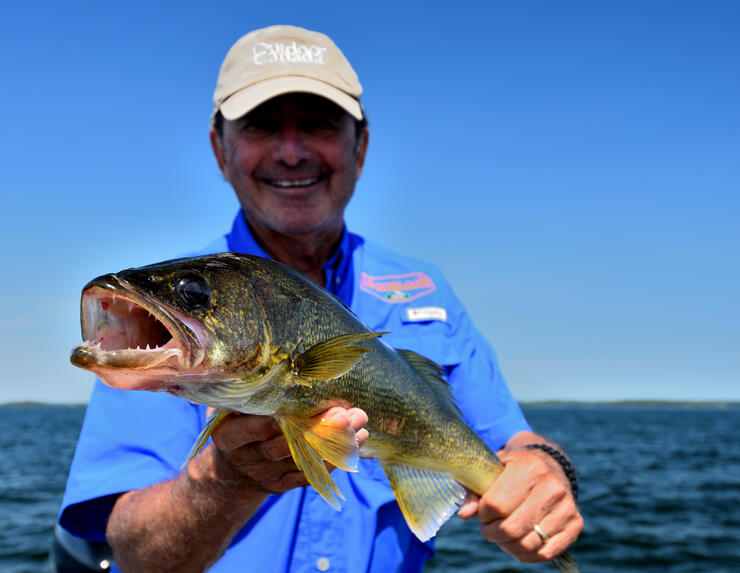
It is precisely what my grandson Liam and I did last week when we greeted the cold front's arrival and whacked the daylights out of the walleyes and northern pike. So much so that we enjoyed our best fishing, so far, of the summer season.
We stuffed the light rods and reels spooled with 6- and 8-pound test line into the Kingfisher's rod locker and left the jig boxes and live bait at home—I swear we didn't bring them with us—so there was no possible way we could fall off the wagon. In their absence, we each dug out three medium-heavy action rods spooled with 10 - to 14-pound test Maxima Ultragreen and Sufix Fuse.
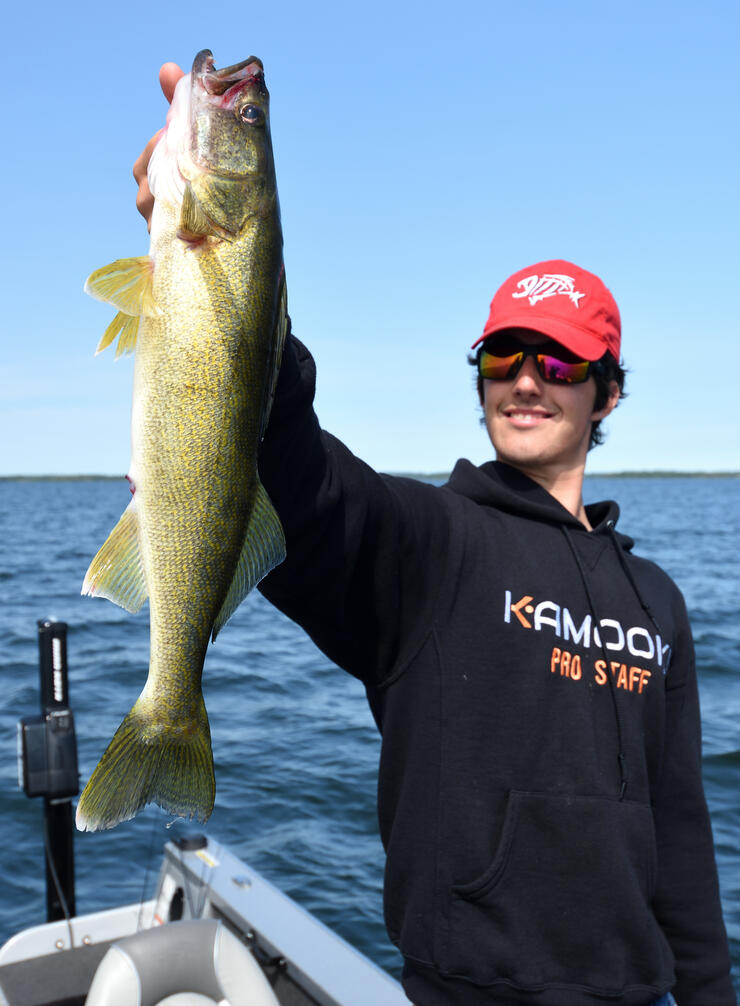
To the ends of the rods, we tied on an assortment of lures that included vibrating lipless Kamooki Smartfish, Rapala Ripstop jerkbaits, Storm 360 swimbaits, 3/4-ounce jigs, and Bass Magnet Shift 'R Shad paddletails, and 3/4-ounce ReelBait Fergie spoons. If there was going to be a fish fight, we were going to win it.
A huge part of our strategy also, was not to stop until we had clearly marked a good size school of fish on the Humminbird Helix 12 that I kept on split-screen 2D sonar/side imaging. Two or three marks on the screen simply didn't cut it—we had to see at least a dozen or more fish. And if the walleyes were suspended a few feet up and off the bottom, so much the better.
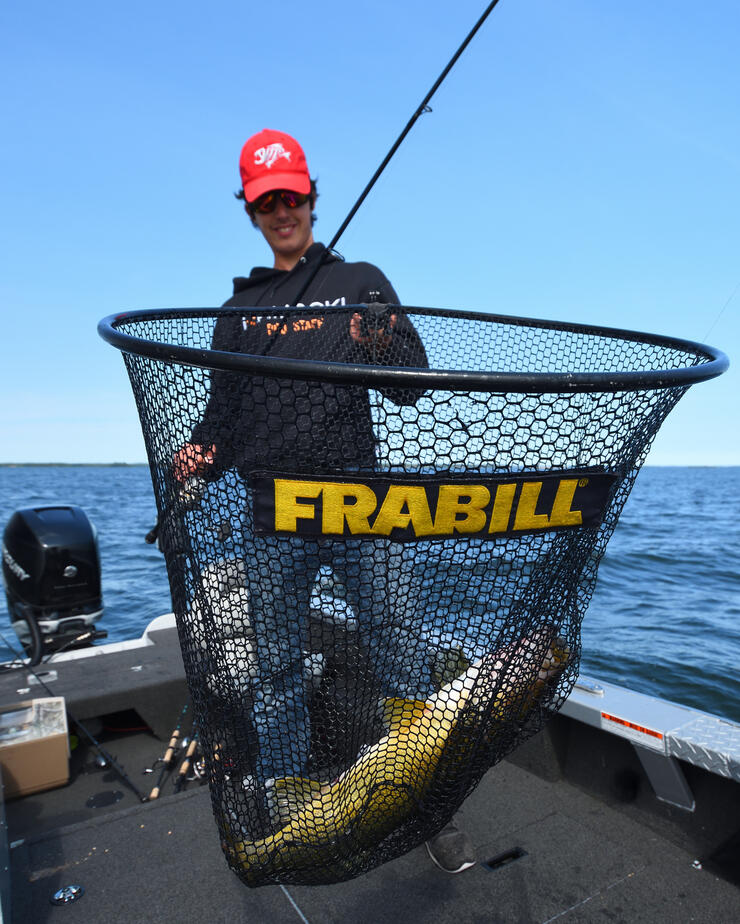
When we spotted a school of walleyes up shallow, in 8 to 12 feet of water, typically on the windy side of an island point or shoreline, we dropped down the Talon to hold us perfectly in place and picked the school apart. Liam is an absolute fiend with a jerkbait—he caught a monstrous 22-inch smallmouth on one earlier this year—so while he slashed away with the Ripstop, I counterpunched with the Smartfish and 360 Swimbait. The walleyes demolished the lures, and we were blessed often enough throughout the day with a bounty of beautiful pike.
It was so exciting and so much fun.
And the action continued when we moved off the ends of the island points, across the hard-bottomed saddle flats that connected the islands and over the main lake reefs. Out here in the deeper water, however, we relied on the heavy-headed Shift 'R Shads and Fergie Spoons that we popped up off the bottom, paused for a second or two, and then let free-fall back to the mud and clay. If a walleye didn't smack it on the upward pause, it was simply there when we snapped it back up.
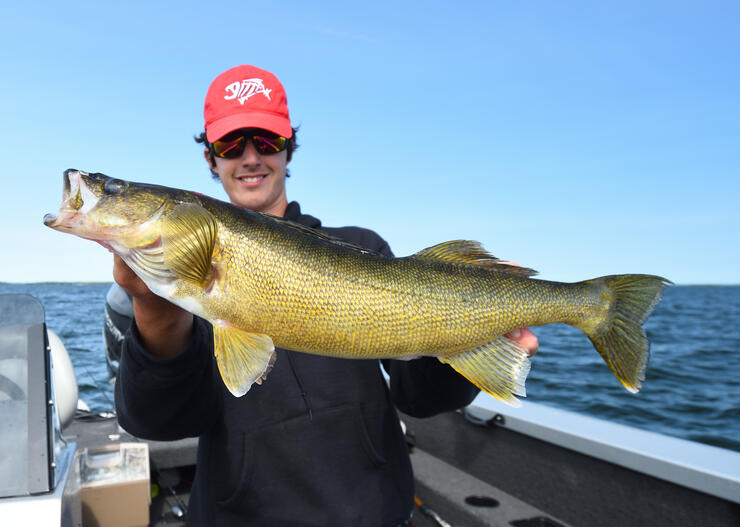
And once again, big bonus pike filled the net, which we knew would be the case, given that the deeper water offered the big, toothy critters the ideal 64° F / 18 ° C optimal temperature at which they thrive.
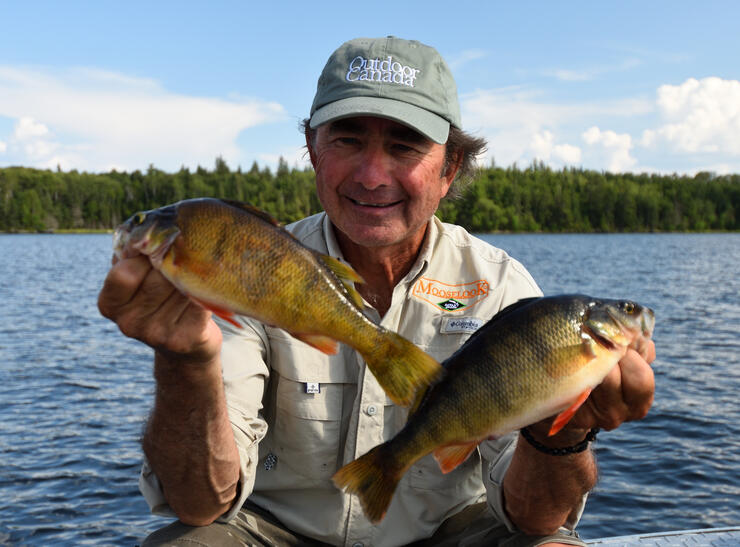
At the end of a very short day of fishing—we didn't get the boat into the water until 10:30 and were home for dinner with time to spare—we conservatively reckoned that we had caught between 50 plus walleyes and at least a dozen hefty pike. Throw in a handful of giant yellow perch—where the heck did they come from?—and we drove home looking forward to the next cold front, and it's anything but tough fishing.
Recommended Articles
Prime Time for Ontario Panfish
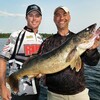
Family Friendly Fishing Getaways in Northern Ontario

Into the Bear's Den: Bass Fishing on the French River
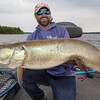
A Multispecies Mecca: Lake of the Woods
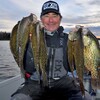
Bivins’ Bounce Crappies
Bobber Down

The Ultimate Social Distancing Getaway
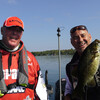
Spring is in the Air

Crawford’s Diamond in the Rough
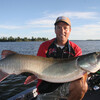
Three Surefire Solutions for Catching Canadian Muskies
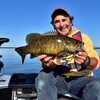
Cranking Up The Heat in Northern Ontario
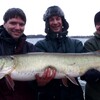
Who Let the Dawgs Out
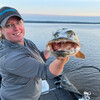
Become a World-class Fishing Guide

The Northern Walleye Dream
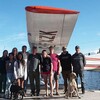
Big Hook Camps
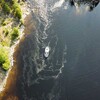
3 Great Walleye Lakes
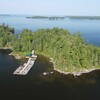
Eagle Lake Island Lodge
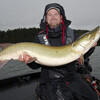
Killarney’s Pike Fishing Paradise
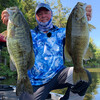
The Lake With Giant Bass


